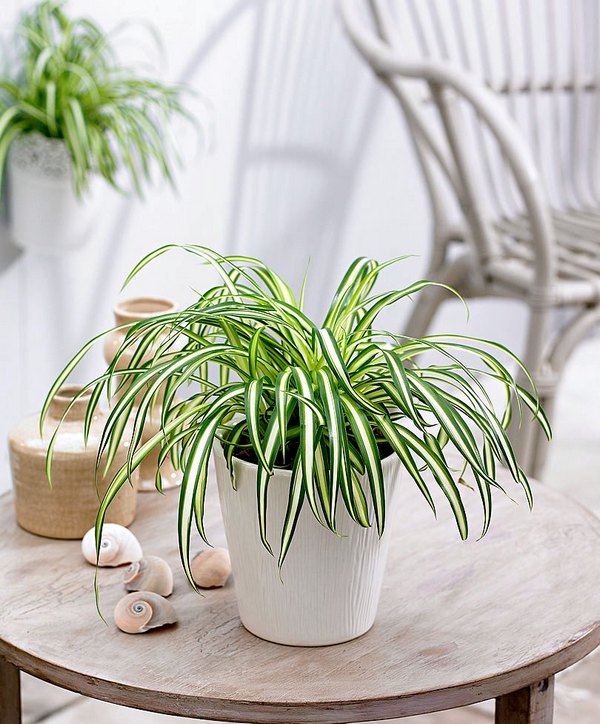
Houseplants, such as the haworthia (bottom left) and spider plant (above), add life to a home and are inexpensive and calming.
HOUSEPLANTS have been a mainstay of indoor décor for generations, but their selection and use has changed over time, particularly with urbanization.
People no longer are wedded to placing a few potted African violets on sunny windowsills to add color and texture to small spaces. Instead, they’re choosing less demanding houseplants, like succulents and cacti, or those offering utility, like herbs and strawberries.
Younger homeowners often lack the means or time to raise pets or children, so they find living substitutes in houseplants.
The plants become part of the household.
“People give their houseplants names and talk to them,” says Bodie Pennisi, a horticulturist with the University of Georgia. “They also play music for their plants so they’ll grow better. I don’t know if that kind of reaching out is scientifically proven to work, but it certainly shouldn’t hurt.”
Houseplants do require care, but they don’t need early morning walks or shuttling to and from soccer games. They aren’t banned by condo boards, as pets might be. They are inexpensive and calming.
And they’ve been enjoying a revival, Pennisi says.
“Back in the ’70s, the Green Revolution was a time when a huge push was made to grow things indoors,” Pennisi says. “The more plants in planters the better.
“But times change,” she says.
“Growers are selecting different plants. They’re going for smaller plants. Mobile plants. Succulents, orchids and cacti are being used to accessorize table settings and entries.”
One of the newer trends is multifunctioning houseplants, Pennisi says. “Herbs, for example, are nutritious. They can go directly from planter to plate.”
Some houseplants can clear the air in enclosed surroundings. They absorb pollen, bacteria and molds while taking in carbon dioxide to process into oxygen. These air-cleaning houseplants include
spider plants, ficus, Boston fern, snake plants, aloe, English ivy and philodendron.
Houseplants also can be therapeutic. “The mental health benefits of plants are obvious,” Pennisi says. “We’re linked with nature. Plants are part of us, whether we notice it or not. They give us something to nurture.”
The DIY movement has also embraced plants, she adds, whether through macrame hangers, decorated pots, or the popularity of terrariums, miniature fairy gardens and bonsai.
Houseplants are durable, but that doesn’t make them easier to grow than ornamentals or vegetables, says Beth Berlin, an educator at the University of Minnesota Extension’s St. Cloud office.
“Selection is important,” Berlin says. “Look at the natural environment in which they thrive and then look at your own. Plants have special needs inside your home and you have to find them.”
That includes deciding which potting soil to use, watering and feeding them properly, and providing enough humidity and light.
“Light is the big deal,” Berlin says. “Leaves are the first symptoms to tell you if you’re over-watering or under-watering.”

